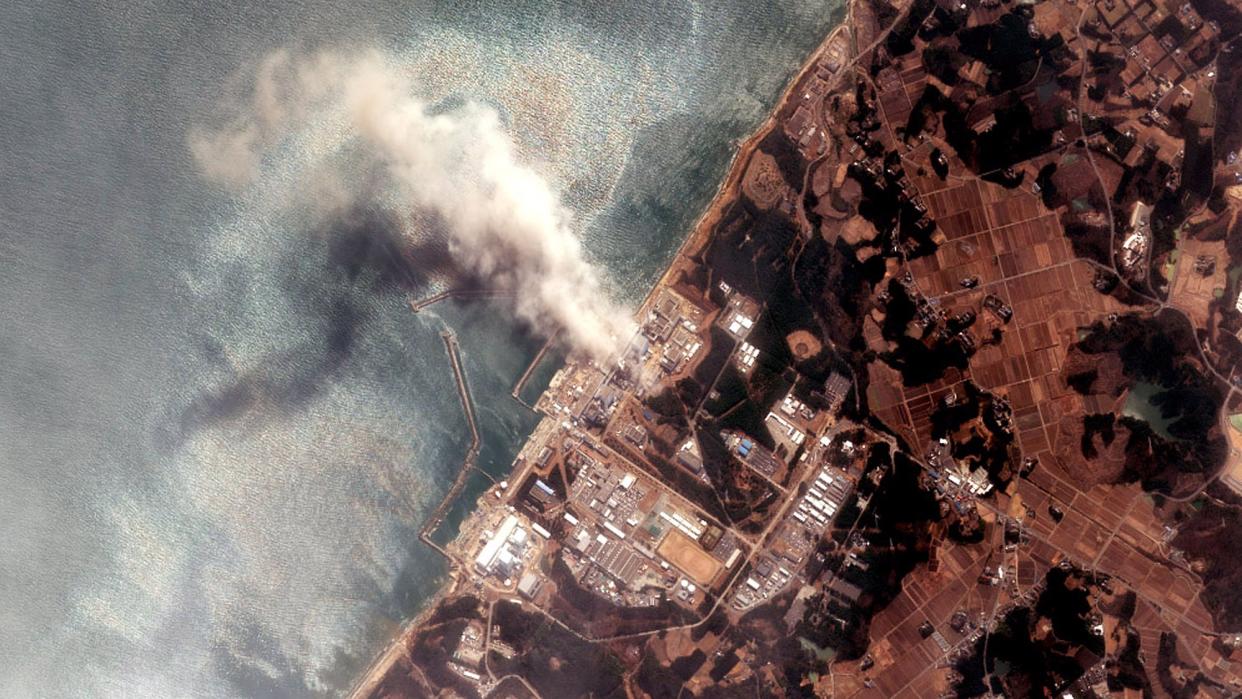Drones offer a glimpse inside Fukushima nuclear reactor 13 years after disaster

A team of miniature drones recently entered the radioactive ruins of one of Fukushima’s nuclear reactors in an attempt to help Japanese officials continue planning their decades’ long cleanup effort. But if the images released earlier this week didn’t fully underscore just how much work is still needed, new footage from the tiny robots’ excursion certainly highlights the many challenges ahead.
On Thursday, Tokyo Electric Power Company Holdings (TEPCO), the Japanese utility organization that oversees the Fukushima Daiichi plant reclamation project, revealed three-minutes of video recorded by a bread slice-sized flying drone alongside a snake-like bot that provided its light. Obtained during TEPCO’s two-day probe, the new clip offers viewers some of the best looks yet at what remains of portions of the Fukushima Daiichi nuclear facility—specifically, the main structural support in its No. 1 reactor’s primary containment vessel.
The Fukushima plant suffered a catastrophic meltdown on March 11, 2011, after a magnitude 9.0 earthquake off the Japanese coast produced a 130-foot-tall tsunami that subsequently bore down on the region. Of the three reactors damaged during the disaster, No. 1 is considered the most severely impacted. A total of 880 tons of molten radioactive fuel debris is believed to remain within those reactors, with No.1 believed to contain the largest amount. An estimated 160,000 people were evacuated from the surrounding areas, with only limited returns allowed the following year. Around 20,000 people are believed to have been killed during the tsunami itself.
Last week’s drone-gathered images and video show the remains of the No. 1 reactor’s control-rod drive mechanism, alongside other equipment attached to the core, which indicate the parts were dislodged during the meltdown. According to NHK World, “agglomerated or icicle-shaped objects” seen in certain areas could be nuclear fuel debris composed of “a mixture of molten nuclear fuel and surrounding devices.”
[Related: Japan begins releasing treated Fukushima waste water into the Pacific Ocean.]
Experts say only a fraction of the damage could be accessed by the drones due to logistical difficulties, and that the robots couldn’t reach the core bottom because of poor visibility. Similarly, radiation levels could not be ascertained during this mission, since the drones did not include instruments such as dosimeters so as to remain light enough to maneuver through the plant.
https://www.youtube.com/watch?v=b9iwi8aFPnw\u0026pp=ygUXRnVrdXNoaW1hIERhaWljaGkgZHJvbmU%3D
TEPCO now plans to analyze the drone data to better establish a plan of action to collect and remove the radioactive debris within Fukushima. In August 2023, officials began a multiphase project to release treated radioactive wastewater from the plant into the Pacific Ocean. While deemed safe by multiple agencies and watchdogs, the ongoing endeavor has received strong pushback from neighboring countries, including China.
The Japanese government and TEPCO have previously estimated cleanup will take 30-40 years, although critics believe the timeline to be extremely optimistic.

